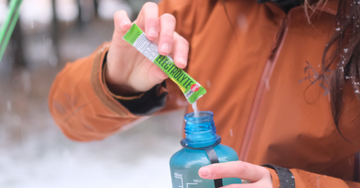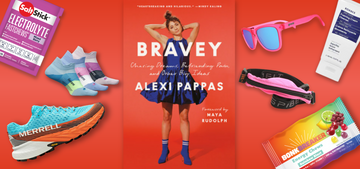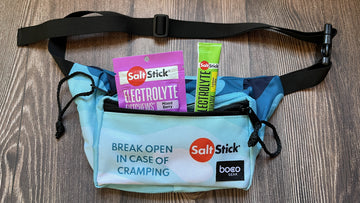
Have you prepared your endurance goals for the New Year? Learn how a well-balanced electrolyte routine could help you break through to the next level.
To an endurance athlete, January may be one of the most important times of the year. The absence of available races means there is little chance for a PR, and long training sessions have usually wound down to maintenance mode.
This creates a unique opportunity to reflect on the past season and develop a strategy to enhance success in the upcoming year.
Nutrition plan fundamentals
Like the factors driving performance, nutrition can also be divided into three core elements: water, calories and electrolytes. Insufficient or unbalanced intake of these groups will inevitably come at the cost of maintaining physical output.
In other words, you’ll “bonk,” “hit the wall,” “run out of gas,” or any other euphemism that simply means you cannot keep going at the same pace.
While most athletes do consume a mix of water, calories and electrolytes during training and racing, rarely does this happen in a structured way. Instead, it is more common to grab a sports drink before a long run or reach for a packet of gels during a bike ride—with little connection to an overall plan. While these are helpful steps, over time, an unstructured or unbalanced nutritional routine can cause issues.
For instance, sweat typically has about 1,000 mg sodium/liter, but due to concerns about taste, a typical sports drink has only 440 mg sodium/liter. Otherwise, the product would taste like seawater. Simple math illustrates that if, during the course of training, you ingest nothing but sports drinks (or worse, water), your electrolyte stores will become too low compared to your water stores, a medical condition known as hyponatremia.
In the best cases, hyponatremia causes a drop in performance. In the worst cases, it can lead to severe headaches, nausea, coma or even death. Beyond safety concerns, there are a number of peer-reviewed studies that demonstrate a clear link between poor electrolyte consumption and decreased performance.
Electrolytes and performance
In 2015, researchers at Camilo José Cela University (UCJC) divided 26 medium-distance triathletes into two groups. One group completed a middle-distance triathlon (1.2 miles swimming, 56 miles biking, 13.1 miles running) consuming sports drink, but also consuming SaltStick Caps to help replace sodium. The second group completed the same distance while consuming sports drink, but they received a placebo capsule with no extra sodium.
Researchers were aiming to replace about 70% of sodium in the first group, but only about 20% in the second group (the difference solely due to SaltStick). After the race, researchers found the athletes who consumed the SaltStick Caps finished in an average of 26 minutes faster. The increase in speed usually came from improved cycling and running times, which come later in the race after electrolyte levels begin to decline.
The results were published in the Scandinavian Journal of Medicine & Science in Sports.
A few years later, in 2018, Scientists at Merrimack College in Massachusetts gathered 15 ice hockey, lacrosse and track & field athletes to test their hydration needs, again splitting them into two groups. For one week of afternoon practices, one group hydrated with a personalized plan unique to each athlete, based on the athletes’ sweat rate and sodium concentrations. The other group hydrated by drinking to thirst.
After seven days, the groups were switched and the experiment was repeated. Within the control groups (i.e. the athletes who drank to thirst), jump distances and awareness times expectedly worsened following a moderate to hard training session of 45 minutes to two hours, depending on the sport. However, when participants followed a personalized plan, they jumped a statistically-significant five inches farther, tracked moving objects at around 0.36 m/second faster, and exhibited shorter heart-rate recovery times, compared to the control group.
These results were published in the Journal of the International Society of Sports Nutrition.
In both cases, the evidence lines up: By ensuring a balanced intake of electrolytes, athletes can reduce the severity of performance decreases that accompany long-distance events. There are physical limits to how much nutrition an athlete's digestive system can absorb during exercise, meaning given enough time, some amount of performance decline is inevitable. But the right nutrition plan can significantly mitigate its impact.
Putting your nutrition plan into action
Our team is dedicated to applying scientific rigor to everything we do as a company, meaning we frequently pour through research papers like the ones listed above. But we realize not everyone has the time or desire to do the same, so we boiled things down into the following five principles.
1. Begin implementing a balanced approach to nutrition for workouts lasting 90 minutes or more. Except for extremely hot and/or humid conditions, if you are exercising for 60-75 minutes or less, you will likely be able to rely on your diet alone to replenish any electrolytes you lose through sweat. Your physiology and fitness level will ultimately determine how long you are able to exercise without fuel, but for most people, the maximum time recommended in most literature is 90 minutes.
2. Keep your nutritional intake similar throughout the race. An ideal nutrition plan looks similar from start to finish. Sometimes, in very long races, athletes will shift from solid to liquid sources over the course of the day, but the ratio and amount of calories, water and electrolytes should stay constant.
3. Base your water intake on sweat rate. Sweat rates can vary widely from person to person, and it is best to tailor your hydration plan to your body’s unique needs. This chart from the Korey Stringer Institute at the University of Connecticut explains how to calculate your rate of water loss during an hour-long workout. You can then use those findings to inform your hydration plan for workouts in similar environments (ideally, you would recalculate your sweat rate when you move to an environment that has a significantly different temperature, humidity level or altitude).
4. Cap your calories at 300-400/hour. Studies have indicated upper limits on absorption rates, in particular for energy, at about 300-400 kcal/hour. Any more, and you will likely suffer from digestive issues.
5. Consume a balanced supply of electrolytes that aligns with water intake. As mentioned above, most sports drinks do not provide enough sodium relative to the amount of water they contain, which can lead to serious deficits over time. Additionally, many sports drinks do not address any form of supplementation of the other key electrolytes, including potassium, calcium and magnesium, which further offsets the balance and can potentially cause additional cramping and muscle issues. That is why we designed SaltStick to replace the full spectrum of electrolytes lost through sweat and in a form your body can easily absorb.
The process of fine-tuning nutritional intake is unique to each athlete. And in case you were wondering, it is incredibly difficult to get right, which is why nutrition is often called the “fourth sport of triathlon.”
However, a correct approach to nutrition is crucial if your goal is to get faster, go longer or improve your ranking in your age group. It may take some trial and error, but in the end, you will be well-prepared to make this season your best one yet.
Disclaimer: Contact your physician before starting any exercise program or if you are taking any medication. Individuals with high blood pressure should also consult their physician prior to taking an electrolyte supplement. Overdose of electrolytes is possible, with symptoms such as vomiting and feeling ill, and care should be taken not to overdose on any electrolyte supplement.







